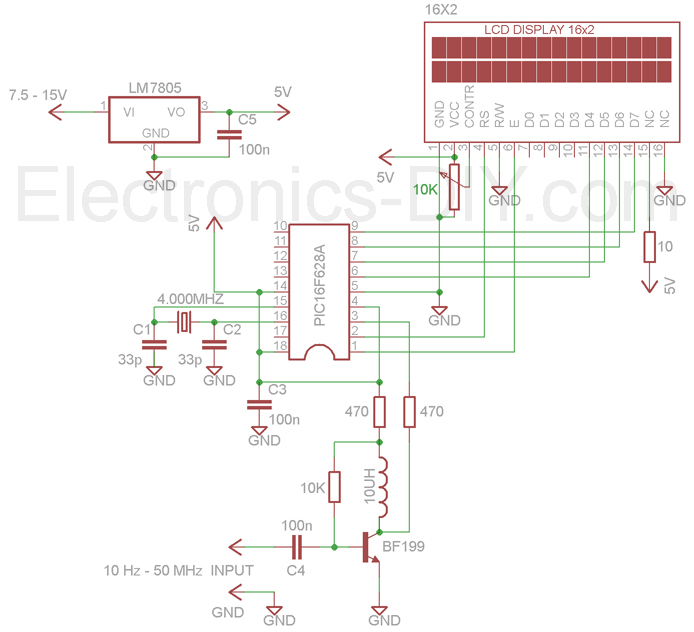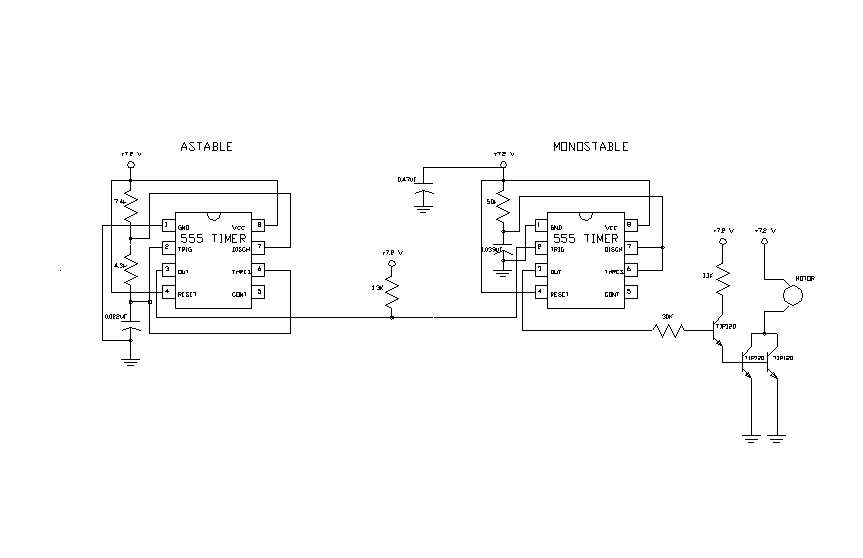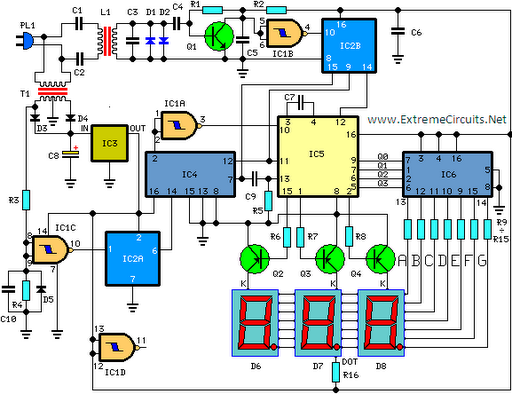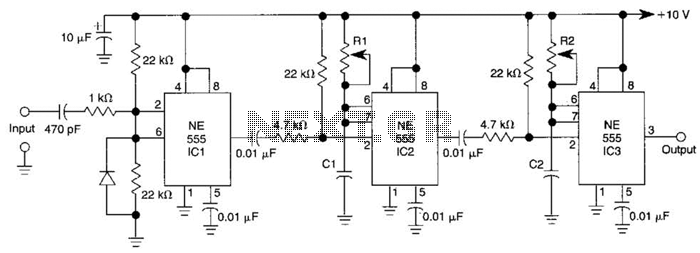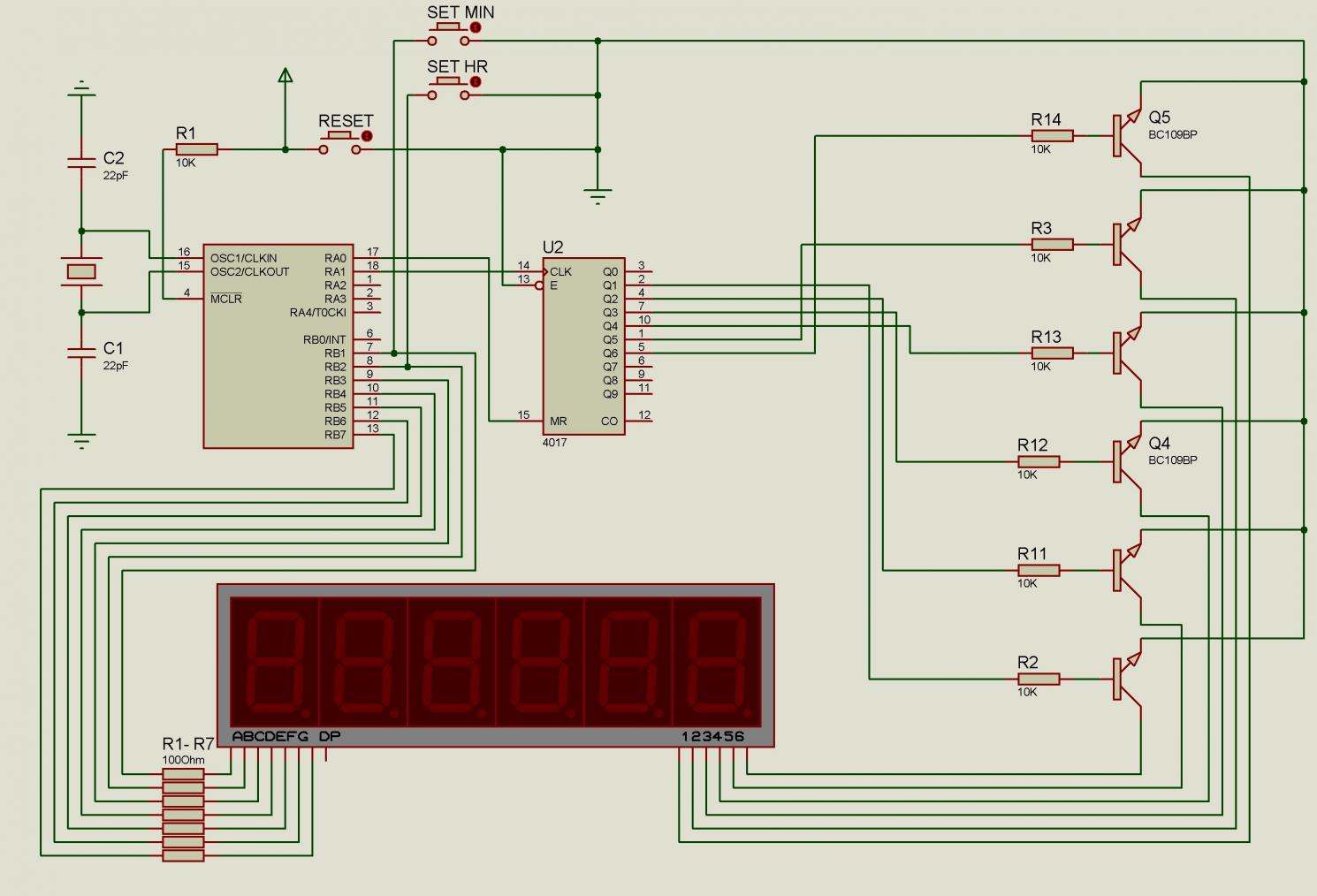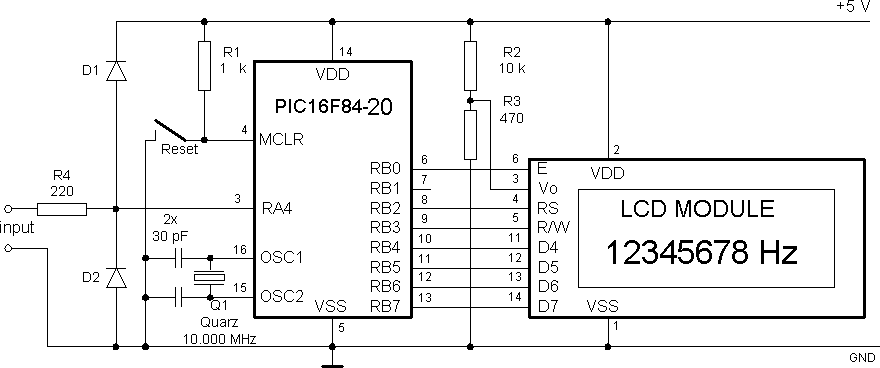
Digital pulse counter
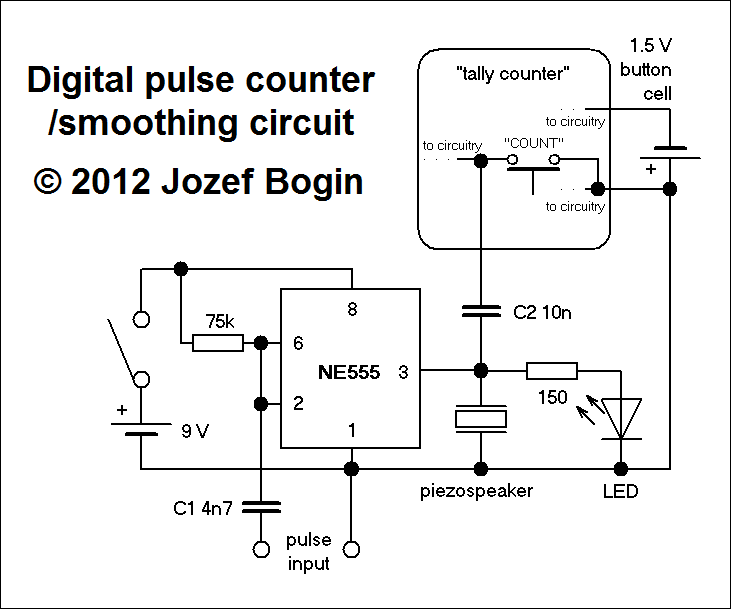
This is a simple yet versatile pulse counting and smoothing integrator circuit featuring an NE555 timer as the waveform shaper and a small LCD display for output. Originally designed for counting pulses from Geiger counters, it includes a piezo speaker and an LED for indication. The circuit can also be adapted for various applications such as revolution counters and track/lap counters. It consists of two main components: the wave shaper, which converts input pulses into a square-wave-like waveform using the NE555 timer, though discrete components could also be employed. The shaped output is connected to a piezoelectric speaker and an LED diode, producing audible ticks that can be heard from a distance. To simplify the design, a commercially available tally counter was utilized, which operates on a single button cell and automatically shuts off after a period of inactivity. Modifications involve accessing the internal circuitry to connect the output of the shaper to the COUNT button of the counter. The circuit is compatible with similar types of counters, though adjustments to coupling capacitors C1 and C2 may be necessary to prevent multiple pulses from being registered. It is advisable to relocate the internal battery for easier access during repairs. With standard use, both the 9V and 1.5V batteries are expected to last over a year. Although untested, it is believed that the counter could function normally with a 9V battery using an appropriate resistor. The counter has successfully registered up to 300 pulses per second, although the display may dim at this rate and return to normal contrast when idle.
The pulse counting and smoothing integrator circuit operates effectively by utilizing the NE555 timer in monostable or astable configuration, depending on the desired output characteristics. This versatility allows for the shaping of incoming pulse signals into a more consistent square wave, which is essential for reliable counting. The integration of a piezo speaker and LED provides both auditory and visual feedback, enhancing the user experience during operation.
The choice of a tally counter as the output display component is a cost-effective solution, simplifying the overall design while maintaining functionality. The internal modifications required to connect the NE555 output to the COUNT button facilitate seamless integration. The circuit's adaptability allows for variations in pulse input frequency, with the ability to adjust coupling capacitors to mitigate issues related to false triggering caused by noise or signal integrity problems.
In terms of power supply, the circuit is designed to operate efficiently with both 9V and 1.5V batteries, ensuring longevity in typical usage scenarios. The suggestion to relocate the battery for easier access is a practical consideration for maintenance and troubleshooting, highlighting the importance of user-friendly design in electronic circuits.
Overall, this pulse counting and smoothing integrator circuit exemplifies an efficient and adaptable approach to pulse counting applications, suitable for a range of uses beyond its original intent for Geiger counters.This here is a simple but versatile pulse counting/smoothing integrator circuit with an NE555 as the shaper, and a little LCD display as the output. I have originally done it for counting pulses from my Geiger counters, so I have included a piezo speaker combined with an LED for indication, but it can also have a variety of other applications, lik
e revolution counters, track/lap counters and so on. The circuit consists of two main parts, the first part is the wave shaper which transforms input pulses to a more square-wave-like waveform. I have used a NE555 since I have a plenty of them, however nothing prevents you from doing this with discrete parts As mentioned above, my purpose was to integrate the counter with a radiation meter, so the shaped output goes also to a piezoelectric speaker and to a LED diode.
I have to say that the audible ticks have enough volume to be heard even from a distance. For the pulse counting itself, this is where my (creative) laziness kicked in. To keep things small and simple, I did not want to bother with a driver circuit for a separate display. Then I found out on eBay that there`s a multitude of the so called tally counters with a cheap price per piece; approx.
1 EUR. These counters run from a single button cell and they switch themselves off after minutes of inactivity. You need to hack them from the inside and inspect the COUNT button; mine had been connected directly to the positive terminal of the cell and the other pin went to the internal circuitry.
This is where the output of the shaper gets connected to. The above schematic works for similar counters of the above type. In some cases you might need to tinker with the coupling capacitors C1 and C2, especially if a single pulse gets registered as two, three, etc having an oscilloscope handy will be a great help. I also recommend gutting the internal battery out and placing it within easy reach at repairs. With normal usage, both the 9 volt and the 1. 5 volt batteries should last well over a year. I haven`t tried this, but I think that with an appropriate resistor the counter itself should run normally even from the 9 volt battery.
As for the pulse registration itself, this counter has had no problems registering a rate of 300 pulses per second, just the display gets dim at such a rate, and restores to normal contrast when idle. 🔗 External reference
The pulse counting and smoothing integrator circuit operates effectively by utilizing the NE555 timer in monostable or astable configuration, depending on the desired output characteristics. This versatility allows for the shaping of incoming pulse signals into a more consistent square wave, which is essential for reliable counting. The integration of a piezo speaker and LED provides both auditory and visual feedback, enhancing the user experience during operation.
The choice of a tally counter as the output display component is a cost-effective solution, simplifying the overall design while maintaining functionality. The internal modifications required to connect the NE555 output to the COUNT button facilitate seamless integration. The circuit's adaptability allows for variations in pulse input frequency, with the ability to adjust coupling capacitors to mitigate issues related to false triggering caused by noise or signal integrity problems.
In terms of power supply, the circuit is designed to operate efficiently with both 9V and 1.5V batteries, ensuring longevity in typical usage scenarios. The suggestion to relocate the battery for easier access is a practical consideration for maintenance and troubleshooting, highlighting the importance of user-friendly design in electronic circuits.
Overall, this pulse counting and smoothing integrator circuit exemplifies an efficient and adaptable approach to pulse counting applications, suitable for a range of uses beyond its original intent for Geiger counters.This here is a simple but versatile pulse counting/smoothing integrator circuit with an NE555 as the shaper, and a little LCD display as the output. I have originally done it for counting pulses from my Geiger counters, so I have included a piezo speaker combined with an LED for indication, but it can also have a variety of other applications, lik
e revolution counters, track/lap counters and so on. The circuit consists of two main parts, the first part is the wave shaper which transforms input pulses to a more square-wave-like waveform. I have used a NE555 since I have a plenty of them, however nothing prevents you from doing this with discrete parts As mentioned above, my purpose was to integrate the counter with a radiation meter, so the shaped output goes also to a piezoelectric speaker and to a LED diode.
I have to say that the audible ticks have enough volume to be heard even from a distance. For the pulse counting itself, this is where my (creative) laziness kicked in. To keep things small and simple, I did not want to bother with a driver circuit for a separate display. Then I found out on eBay that there`s a multitude of the so called tally counters with a cheap price per piece; approx.
1 EUR. These counters run from a single button cell and they switch themselves off after minutes of inactivity. You need to hack them from the inside and inspect the COUNT button; mine had been connected directly to the positive terminal of the cell and the other pin went to the internal circuitry.
This is where the output of the shaper gets connected to. The above schematic works for similar counters of the above type. In some cases you might need to tinker with the coupling capacitors C1 and C2, especially if a single pulse gets registered as two, three, etc having an oscilloscope handy will be a great help. I also recommend gutting the internal battery out and placing it within easy reach at repairs. With normal usage, both the 9 volt and the 1. 5 volt batteries should last well over a year. I haven`t tried this, but I think that with an appropriate resistor the counter itself should run normally even from the 9 volt battery.
As for the pulse registration itself, this counter has had no problems registering a rate of 300 pulses per second, just the display gets dim at such a rate, and restores to normal contrast when idle. 🔗 External reference
